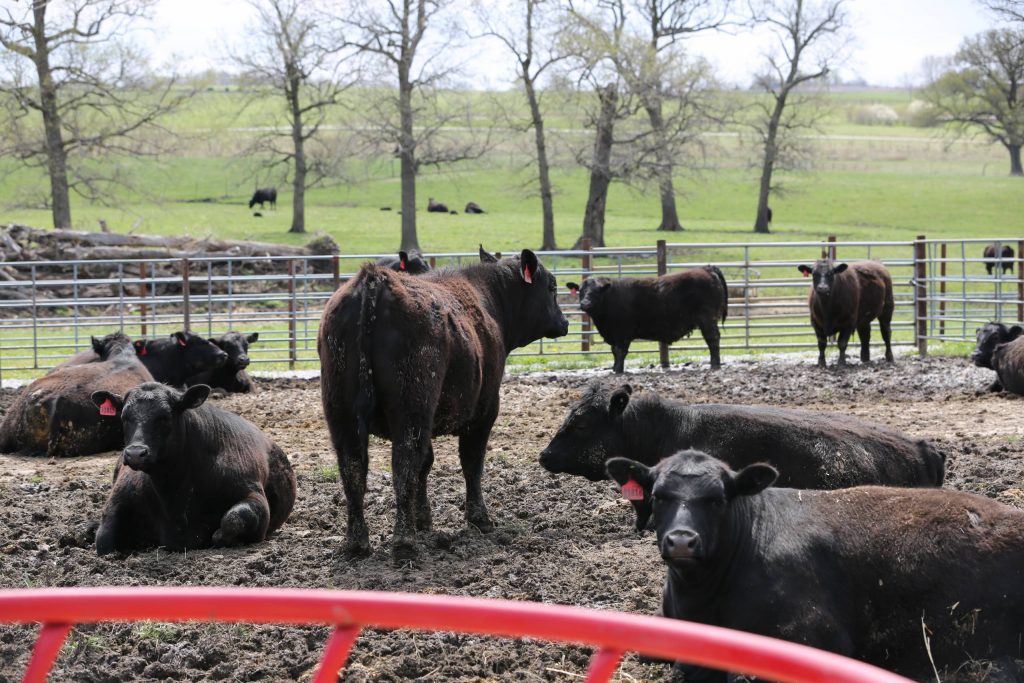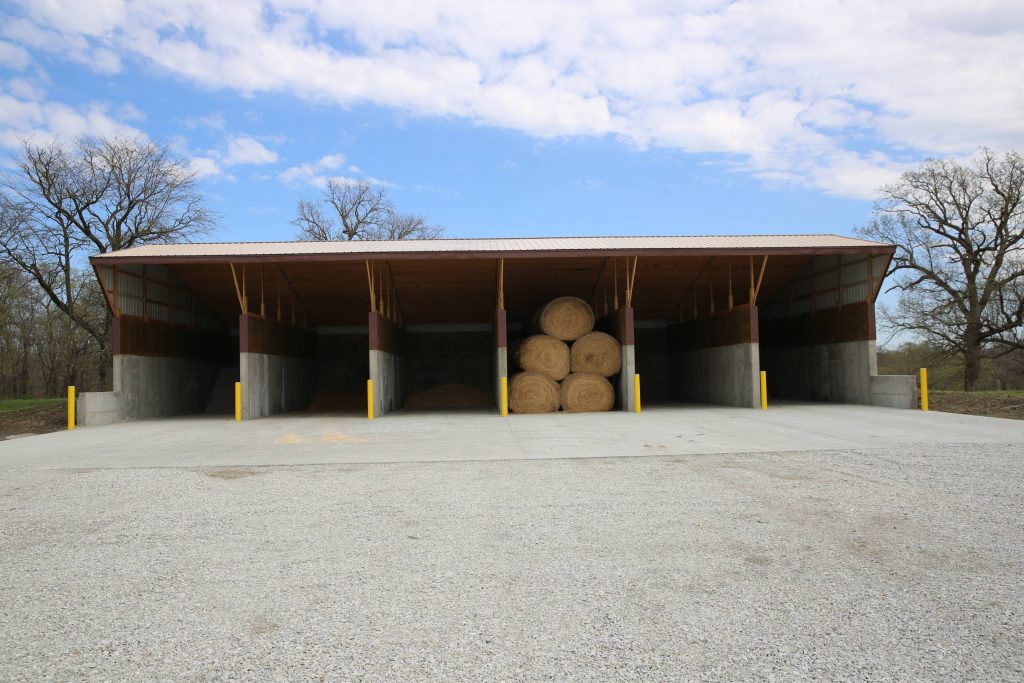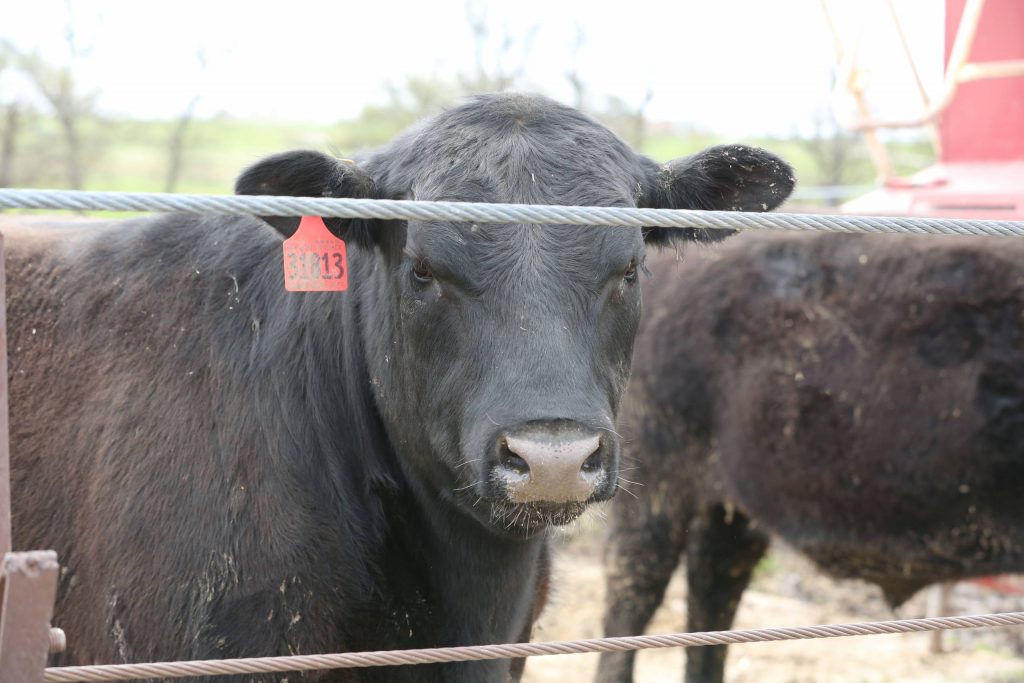Published on
Updated on
Thompson’s feedlot allows specialists the opportunity to feed and keep cattle in the state
Written by Logan Jackson · June 29, 2021

Beef cattle research was introduced at the Thompson Research Center, located in Spickard, Mo., in 1963, and since that time the site has served as an important research location that emphasizes premium cattle genetics.
Thompson, part of the University of Missouri (MU) College of Agriculture, Food and Natural Resources (CAFNR) Agricultural Experiment Station, is continuing to build on that prestigious research resume in 2021. With the help of a USDA Rural Business Development Grant, the Research Center has developed its own feedlot allowing specialists the opportunity to feed and keep cattle in the state and build Missouri’s economic impact.
“If you look at Missouri, we produce about 1.7 to 1.8 million beef calves per year,” said Eric Bailey, an assistant professor in the Division of Animal Sciences and state beef specialist with MU Extension. “Only 500,000 of those calves are backgrounded in the state, much less fed until harvest. There is a tremendous opportunity to keep a large number of animals in the state and increase the economic impact of the beef industry, and we’re hoping to show that at the Thompson Research Center.”

Cattle in Missouri, including some at the Thompson Research Center, are oftentimes sent to other states, like Kansas or Iowa, to be fed before they’re harvested. Bailey said Missouri isn’t really considered a finishing state for cattle, but he is hoping to keep the entire process within the state, from birth to harvest.
“We aren’t going to have the feedlot capacity for 1.7 million calves, but I sure think we can increase the number of calves finished in the state,” Bailey said.
Bailey, who led the charge for the USDA grant, brings a unique perspective to the project. As faculty at West Texas A&M University, he ran a research feedlot. With that past experience, he has helped prepare the feedlot at the Thompson Research Center.
“Being able to work out at the Thompson Research Center has been a real blessing and given me ample opportunities to try new projects,” Bailey said. “When I came here four years ago, I saw Missouri was a cow-calf state and exported a good portion of those calves. I’ve always seen a big opportunity, and I’m excited that we now have the opportunity to add value to the state by putting weight on calves after they are weaned.”
The grant provided funds for a commodity barn to be built at the Thompson Research Center, a key piece to make the feedlot work. The barn holds grain and other feedstuffs long-term, and allowed Bailey to lock in grain prices before they rose.
“The price we locked in for corn last fall has doubled since that time,” Bailey said. “We bought a lot of corn – and having the commodity barn really facilitated that. Having that insulated us from the near doubling of the price.”
Bailey said they partnered with MFA Incorporated for feed early on in the process, as they waited for the commodity barn to be finished.
Bailey also needed pens for the steers that they fed at the site. The Thompson Research Center was already equipped with a bull test facility that wasn’t currently being used, so that conversion wasn’t difficult.
“We made a few changes, but that facility gave us a great foundation for the pens,” Bailey said. “Once we had the commodity barn finished, we were off to the races.”
Bailey said they fed 79 steers this spring, which were fed for about 150 days after weaning. After that process, they were sent to Missouri Prime Beef Packers to be harvested. Missouri Prime began operations in 2021 and offers numerous services for its customer base.

“We’re both early in the process, so it’s been important just to keep the lines of communication open,” Bailey said. “They’re looking for suppliers to provide cattle, and we were happy to have them available to take our steers. It has been a great partnership thus far.”
Bailey said there were two big questions going into the project – would the steers maintain good health and would there be a premium after harvest. He said that in the commercial feedlot industry about 17 percent of calves are treated for illness at some point during their time in the feedlot. At the Thompson feedlot, only one calf had to be treated for illness. They also saw a solid result in terms of performance. Of the first set sent to Missouri Prime, a quarter of the steers earned prime grades.
“Both of these results were incredibly encouraging,” Bailey said. “Our health was outstanding, which we obviously were happy to see. And while we were able to keep strong health, we also maintained great performance, which we come to expect with cattle at Thompson. The 25 percent that were graded so well garnered a $76 per head premium based on quality grade. That’s money that would have gone into someone else’s pocket had we sold them.”
Moving forward, Bailey said he is hoping to continue to feed cattle at the Thompson Research Center. Although they only fed steers this time, he is hoping to do the same with the site’s heifers.
“Thompson has historically sold their heifers that were not quite breeding quality,” Bailey said. “Rather than selling them not long after weaning, we’re going to run them through the feedlot. We’re trying to demonstrate that there are opportunities to increase revenue and to keep cattle around.
“I hope we can take the demonstration and leverage that into some Extension programming as well. We want to offer intensive, hands-on experience. We’ve been tasked with doubling the economic impact of agriculture by 2030. Opportunities such as this play into that goal.